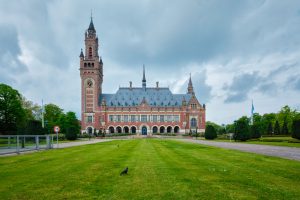KAYIN STATE, MYANMAR — Plotting and planning is replacing an attack and seize mentality among Myanmar’s anti-regime forces as the first rains of the wet season begin, with the opposition National Unity Government (NUG) touting New Zealand as a potential site for a future war crimes tribunal.
Ties between Wellington and the NUG had been strained after the conservatives led by Prime Minister Christopher Luxon invited a junta envoy to Wellington for an ASEAN meeting in mid-April. The envoy’s visa was delayed after a court challenge mounted by that country’s upset diaspora.
But that now seems more like a diplomatic faux pas for a government with just six months under its belt. Both sides have since met and exchanged pleasantries and the NUG is saying legal cases should be prepared “in order to sue the terrorist military junta in New Zealand.”
The NUG’s Human Rights Minister Aung Myo Min has met with legal experts in New Zealand, including former Prime Minister Sir Geoffrey Palmer, to discuss whether the country could host possible International Court of Justice prosecutions under the principle of universal jurisdiction.
This included “what kind of cases should be prepared and how cases should be produced.”
Details of the meeting were contained in the NUG’s Weekly Update newsletter, which said Aung Myo Mint exchanged views on New Zealand’s approach to Myanmar, including provisions for technical and humanitarian assistance.
The visit came amid a diplomatic tour by the NUG, including to Japan, designed to show a sense of unity among the factions which have recorded stunning victories over the military junta amid a dry season offensive launched about six months ago.
About 20 ethnic armed organizations (EAOs) and the People’s Defense Forces (PDFs), the armed wing of the NUG, have fought the junta since not long after an elected government, led by Aung San Suu Kyi, was ousted by the military in early 2021.
The EAOs include the Karen National Liberation Army (KNLA), which took control of most of Myawaddy Township in Kayin (Karen) State on the Thai border in mid-April, while others including the Arakan Army in the east, the Shan and Chin up north, and the Ta’ang National Liberation Army have seized control of most of Myanmar’s borders.
Fighting has ebbed as the first rains of the wet season begin, however, EAO-PDF sources said fighting remains heavy in the Dawna mountain range, which the junta needs to control if its plans to fully retake and hold the strategic town of Myawaddy in the southeast on the Thai border are to succeed.
As mentioned in my previous column, no sooner had the KNLA taken the city of 200,000 people than it abruptly backed down and did a deal with local Border Guard Forces amid pressure from Thailand. Both sides are distrustful but a truce remains.
One NGO source, who was in the meeting between Thai and KNLA officials shortly after Myawaddy was lost by the junta said the Thais – fearful of losing cross border revenue valued at about $1 billion a year – refused to recognize KNLA control of Kayin State.
“The Thais threatened to shut the border which would have starved people in Myawaddy,” the source said, adding that and the prospect the township would have been bombed by the junta’s air force prompted the KNLA to back down on recognition demands for the time being.
Importantly, sources said the Thais maintained that Bangkok would only change its foreign policy in regards to the KNLA and ethnic Karens in Kayin State if anti-regime forces were to take Yangon – Myanmar’s largest and most important city, about 400 kilometers west of Myawaddy.
That advice may well have set the next battlefield agenda but it might have to wait for the next dry season offensive as the EAOs-PDF are widely expected to dig-in and wait out the monsoons.

































